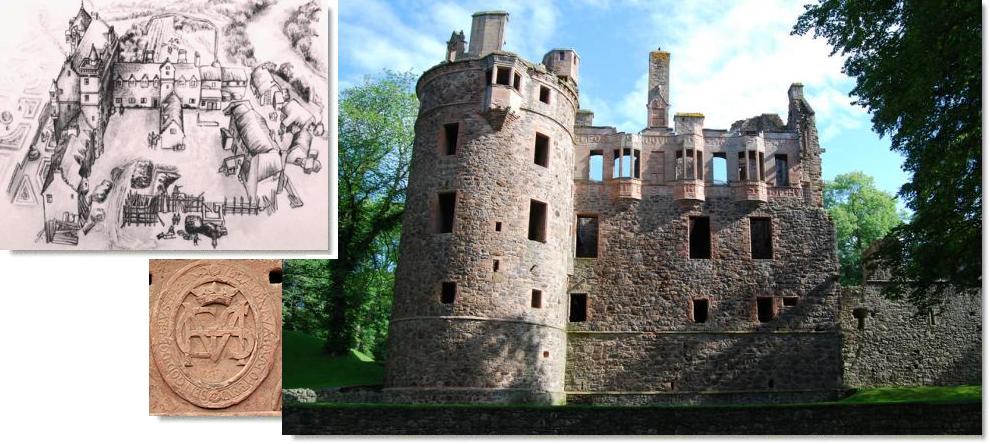David of Strathbogie chose to support the English early in 1314 before King Robert the Bruce's final victory at Bannockburn, and for which his lands and titles were confiscated and granted to Sir Adam Gordon of Gordon and Huntly in Berwickshire; bringing the family of the Gordons to the north and with them the name of Huntly that was to later replace Strathbogie. His daughter Elizabeth Gordon was to became heiress and married Sir Alexander Seton of Seton by Royal arrangement, bringing the Seton's to Aberdeenshire.
In about 1410, the 1st Lord Gordon, Sir Alexander Seton cleared away the 230 year old wooden structure and replaced it with a stone tower house built at the north end of the bailey. Only the thick-walled foundations of the tower house now remain, visible on the north side of the castle courtyard, but the tower house would have been accompanied by a defensive wall around the bailey area, and ranges of other supporting buildings. This castle was burned by the Earl of Moray in 1452, and the damaged tower house at Strathbogie was replaced in 1460 by a much grander building on the south side of the site, where all later development was to take place. Today only the cellars under the later palace remain of the 1460 building.
He was succeeded by his eldest son, also Sir Alexander Seton who became 1st Earl of Huntly; his second son Sir William Seton founded the Seton's of Meldrum in Aberdeenshire; and his 3rd son Sir Henry Seton died without heirs along with his brother William at the Battle of Brechin. George Seton was to become 2nd Earl of Huntly and who later adopted the surname of Gordon and continued the line as the Gordon Earls, Marquis' and Duke's in Aberdeenshire.



